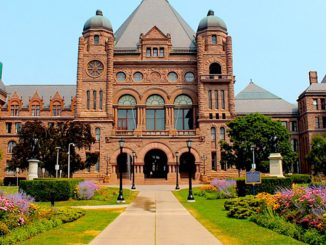
Strategy offers supports to get more people back to work
The Ontario government released its new Poverty Reduction Strategy today which will help more people get back to work and participate in the province’s economic recovery from COVID-19. The five-year strategy outlines key initiatives that will help connect people experiencing poverty with education, skills training, health and other supports, while helping people keep more of their hard-earned money.
“While COVID-19 has taken a toll on the economy, we recognize it has had a greater impact on youth, women, Black and racialized, and Indigenous workers,” said Todd Smith, Minister of Children, Community and Social Services. “Without coordinated action, there is a real risk many people will find it harder to escape poverty.”
The new strategy Building a Strong Foundation for Success: Reducing Poverty in Ontario was developed after extensive consultation, including an online survey and engagement with Indigenous partners and municipal committees. It is focused on:
- Encouraging job creation and connecting people to employment – making investments in education, employment services, and training programs so people can get the skills and experience they need.
- Connecting people with the right supports and services – improving access to supports that address health and well-being and enabling access to education, training, and employment, leading to increased community participation.
- Making life more affordable and building financial resiliency – reducing the cost of living, protecting consumers, and helping people keep more of their hard-earned money.
- Accelerating action and driving progress – using evidence and working across sectors to support economic recovery and developing integrated solutions that better connect the province’s health, social, and economic systems.
“Though COVID-19 has presented many new social and economic challenges, our government is committed to mitigating the damage caused by the outbreak. Our new poverty reduction strategy will play a key part in Ontario’s economic recovery and long-term economic growth,” said Minister Smith.
“Employment services and training programs can play a critical role in helping people lift themselves out of poverty and manage through these difficult times,” said Monte McNaughton, Minister of Labour, Training and Skills Development. “That’s why we continue to invest in new programs and improve our existing services to help people find and keep good jobs. This is part of Ontario’s comprehensive effort to continue to protect and support workers, and to help those who have been particularly hard hit by job losses because of COVID-19.”
The strategy leverages investments made in the province’s 2020 Budget, Ontario’s Action Plan: Protect, Support and Recover, which commits $45 billion over three years to support individuals, families and job creators impacted by COVID-19, and lays the groundwork for a robust long-term economic recovery for the province. Some initiatives include:
- Social Assistance Recovery and Renewal, which focuses on life stabilization as a foundation for long-term job success;
- The Micro-credentials Strategy to provide people with in-demand skills that prepare them for the jobs of the future;
- Implementing the new Employment Services Transformation model to improve employment supports for social assistance recipients;
- Improving mental health and addictions services through the Roadmap to Wellness; and,
- Targeting actions for specific populations, such as the Black and Indigenous Graduation Coach program and the Black Youth Action Plan, that address systemic barriers.
Quick Facts
- Ontario’s Poverty Reduction Act, 2009, requires the government to develop a new strategy every five years that includes a poverty reduction target, initiatives aimed at addressing poverty, and indicators to measure the strategy’s impact.
- The 2020-2025 Poverty Reduction target is to get more social assistance recipients into meaningful employment and financial stability with a goal of increasing the number of social assistance recipients moving to employment each year from 35,000 in 2019 to 60,000 by 2024.
- To help vulnerable Ontarians who have been impacted by the COVID-19 outbreak, the government is providing $510 million through the Social Services Relief Fund to help municipalities and social service providers such as shelters, food banks, emergency services, charities and non-profits.
- The government also provided $111 million in funding to support social assistance recipients in accessing emergency benefits, $26.4 million to Indigenous peoples, including support for First Nations, Inuit and Métis partners and urban Indigenous service providers and $1.5 million in funding to organizations that support Black families and youth to address the disproportionate impacts of COVID-19 in Black communities.
Source: Newsroom Ontario [dot] ca



